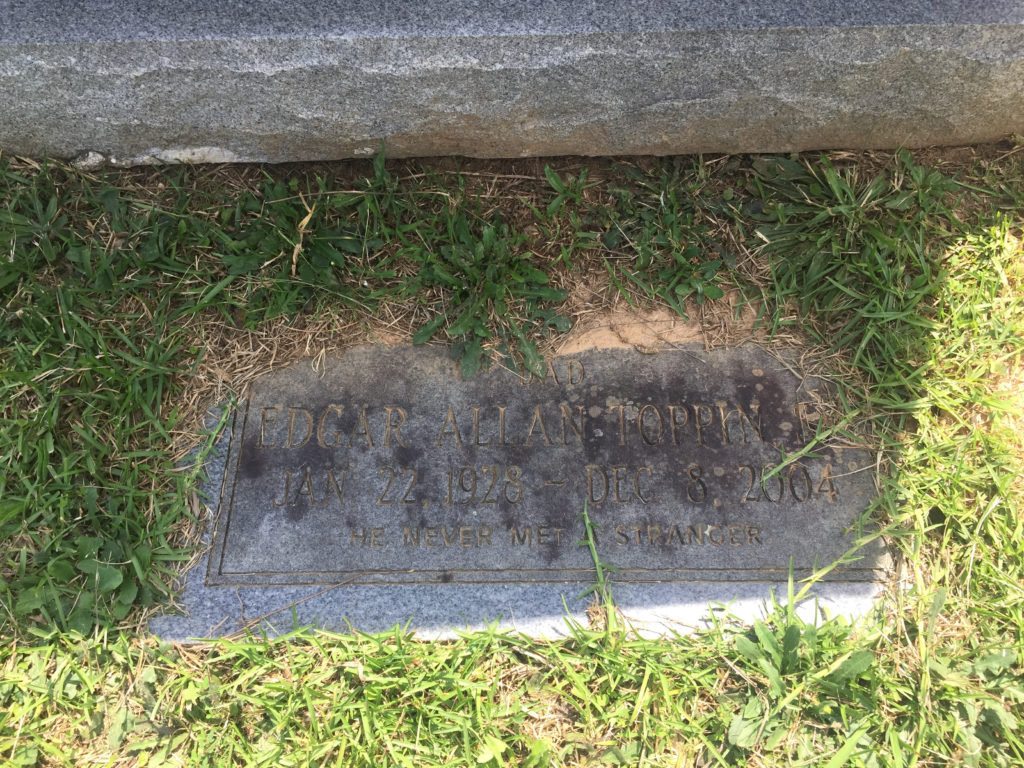Erik Visits an American Grave, Part 769
This is the grave of Edgar Toppin.

Born in 1928 in Harlem, Toppin grew up in a literate but poor Black family, one that really struggled through the Great Depression, as so many did. His parents were Caribbean immigrants. Named for Edgar Allan Poe, Toppin loved books and would escape to the roof of the building where he lived to read in some peace. The young boy was quite bright and started at City College at the age of 16. Then Howard University came offering a scholarship and he finished his undergraduate career at that august institution of Black learning. He completed his Bachelor’s in 1949 and Master’s in 1950. He then went on for his Ph.D. in History at Northwestern, which he completed in 1955.
Toppin dedicated his career to teaching Black history in a nation that was pretty uninterested in that during these years. He started teaching at Virginia State University, a historically Black institution, in 1964. Soon after, he starting using the power of television to teach Black history, creating a 30 episode program called Americans from Africa. His early publications were on Black politics in Ohio, but he never published a book on what evidently was his dissertation topic. Instead, his publications were centered around big public history books to reach the masses about Black history. They included A Mark Well Made: The Negro Contribution to American Culture, published in 1969, A Biographical History of Blacks in America Since 1528, published in 1971, and The Black American in United States History, published in 1973.
Toppin’s greatest achievement though was the creation of Black History Month. This was an idea that went back at least to the great Black educator Carter Woodson. A Black History Week had been created, but it was largely ignored except in specific circles and what is a week anyway. In 1976, Toppin was president of Association for the Study of African American Life and History (ASALH). This is the premier Black history professional organization, then and now. As president, he lobbied the Ford administration to proclaim a national Black History Month. Ford, seeking Black votes, decided this was a good idea and that year, Ford announced it. It has of course today become central to our national study in history, both publicly and in the school system. Every February, the nation focuses pretty heavily on Black history and think of how far we have come on this since 1976. Black history is central to the interpretation of nearly every historical site in the National Park Service. Our understanding of Reconstruction and its failures, the struggles of abolitionists, the heroic work of Frederick Douglass and Ida Wells and W.E.B. DuBois and so many more has become fairly common knowledge in America. This is hugely important and has done a lot to move the nation, for instance, to a point where the Confederate flag is increasingly shunned and has largely disappeared from public display at official sites.
Toppin spent his later career as an administrator at Virginia State, including as provost of the school from 1987-89. He published some histories of the school and remained a senior figure in the Black history community. He died in 2004 of heart failure. He was 76 years old.
Edgar Toppin is buried in Blandford Cemetery, Petersburg, Virginia.
This grave visit was funded by LGM reader contributions, though this is not the first grave to be highlighted from my recent trip. If you would like this series to visit other presidents of ASALH, you can donate to cover the required expenses here. Robert E. Park is in Freeport, Illinois and John Hope is in Atlanta. Previous posts in this series are archived here.


